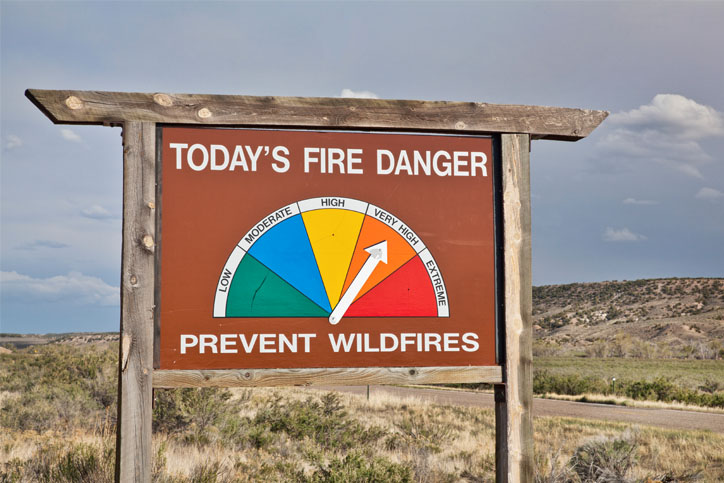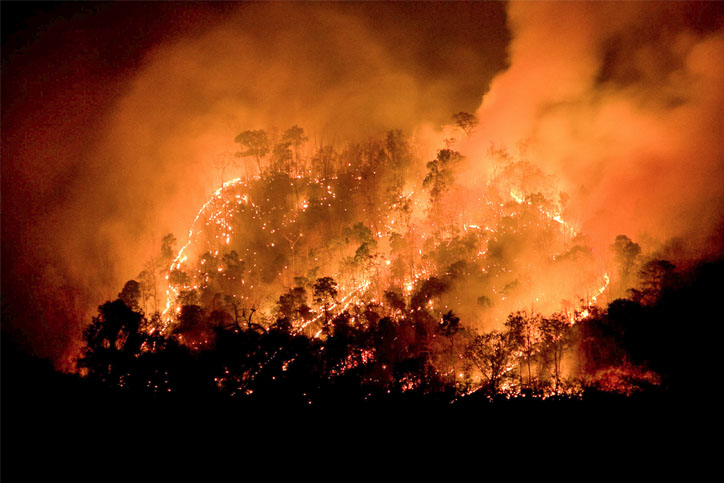Did You See Our Ad?

Click Here to Download Our Wildfire Preparedness Guide
Following a dry winter, much of Colorado is experiencing drought conditions, and fire officials are preparing for a summer Colorado wildfire season that could resemble the devastating blazes of 2012 and 2013—which consumed hundreds of homes and caused hundreds of millions in damage.
When a fire is already raging near your home, there’s little you can do but obey evacuation orders. However, there are steps you can take ahead of time that may protect your home in the event of a wildfire.
The insides of homes are full of flammable materials, so your best bet is to keep flames out.

Tips to Prepare for Fire Season
1. Keep your house and property clear.
The 30-100 foot area surrounding your home is it’s first line of defense. Make sure to regularly clear combustibles and debris around your home, under any decks, and in your gutters, that could serve as fuel for a wildfire. “Debris” includes sticks, pine straw, and dried leaves—anything that could feed embers.
“Combustibles” includes propane tanks, gas grills, and woodpiles. Make sure these items are at least 30 feet from your house and have at least a ten foot surrounding cushion from flammable vegetation.
Remove any vines that cling to your house and make sure that landscaped shrubs and bushes don’t actually touch your walls. Make sure all the vegetation surrounding your house remains well-watered.
2. Caulk and screen liberally.
The insides of homes are full of flammable materials, so your best bet is to keep flames out. Small openings, such as holes in siding or areas around eves or window frames, may allow embers inside, so caulk any visible gaps and put weather stripping at the bottom of your garage door or around a dog door, to ensure a proper seal. Install ember-resistant screens on the tops of chimneys and outdoor-facing vents.
Keep highly flammable vegetation at least 100 feet from your house.
3. Remove overhanging branches.
Remove any branches coming within 10 feet of the roof or chimney. These branches could allow flames to jump from a tree to your roof.
4. Use fire-resistant building materials.
Install dual and triple-paned windows, fire-resistant shutters or drapes, and a roof with a “Class B” or better fire rating. If you’re adding a new porch or deck, built the structure to the ground or enclose the area beneath with concrete, brick, rock, or stucco—any sort of non-flammable material. Don’t built a new deck on wooden stilts.
5. Thin out wooded areas.
The more vegetation around your house, the more fuel for a fire. If your lot is heavily wooded, it’s a good idea to thin out the trees.
6. Replace highly flammable vegetation within with less flammable vegetation.
- Keep highly flammable vegetation at least 100 feet from your house. This means your grass should stay below four-inches tall and organic mulch should be replaced with stone or gravel.
- Evergreens are highly flammable. Aspen and narrowleaf cottonwood are not.
- If you don’t want to cut down trees, clear the space beneath them of bushes and twigs, to discourage the formation of fire paths.
Colorado State’s Extension program has some great suggestions for fire resistant landscaping.
7. Don’t be the source.
- Obey burn bans
- Extinguish campfires, cigarettes, and matches with water
- Don’t mow or trim grass on windy days
- Never pull your vehicle onto dry grass
- Ensure that off-road vehicles and power tools such as chainsaws have spark arrestors
Make sure your home is protected in the event of a wildfire. Talk to a Colorado Farm Bureau Insurance agent today about adding fire coverage to your homeowner or renters insurance.
Sources:
Avoiding Wildfire Damage: A Checklist for Homeowners (FEMA)
Reducing Risk to Wildfire Loss Does Not Have to be Costly (NFPA)
Rocky Mountain Insurance Information Association (RMIIA)

